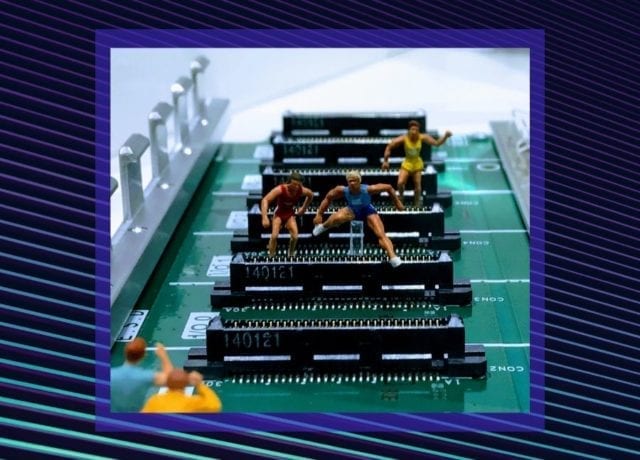Almost a decade has passed since ESPN launched a new vertical to cover eSports—and for years, many of us, including advertisers, were left scratching our heads at competitive gaming.
That was then, and this was now.
If you think tuning in to watch other people play a video game sounds boring at best, at least 33.2mm people disagree with you. That’s the number of active users on Twitch. In 2021, Twitch users watched 22.8b hours of content on the platform.
“eSports was once an under-the-radar activity for enthusiasts of multiplayer online games,” says eMarketer principal analyst Paul Verna. “Just a few years later, it’s a multimillion-dollar business in the US, with implications for game developers, players, leagues, teams, live venues, streaming platforms, TV networks, audiences and marketers.”
The popularity of Twitch has caught the attention of other big-name players, namely, Facebook and YouTube, both of which continue to make a name for themselves in the gaming sphere. In Q3 2022, YouTube Gaming Live generated 1.17b hours of content watched.
eSports has even made its way to the Olympics, with the IOC confirming Singapore as the host of the first Olympic Esports Week in June 2023.
The growth of eSports is a rapidly expanding opportunity for digital advertisers looking for new, younger audiences.

eSports is Growing — So What?
At the beginning of 2019, Jurre Pannekeet at Newzoo reported that the global eSports economy will top $1 billion for the first time that year. The new milestone will come after a nearly 27 percent YoY growth. The eSports economy is expected to reach $5.74b worldwide in 2030.
Most revenue comes from media licensing, as video game brands and platforms license streaming to other major players.
“Both digital broadcasters and TV media companies have already started to compete for eSports content and the extent to which these deals will generate a direct return on investment will impact the pace of media rights growth,” writes Pannekeet.
Red Bull, for example, has sponsored eSports tournaments for Blizzard’s StarCraft 2 and sponsoring teams such as Tempo Storm.
Ryan Pessoa, a pro FIFA player for Man City Esports, said, “The way Red Bull works with us is pretty much the same as how they work with their traditional athletes.” He continued, “We all train at their Athlete Performance Centre in Austria which has been so useful for me in terms of teaching me all about nutrition, and mental and physical wellness. Gaming professionally can be stressful so it’s great to be able to focus on lifestyle improvements that can help in and outside of the game.”
Red Bull and other brands are all-ins on eSports.
The interest from brands means that media companies will launch advertising packages around the eSports market, which is why the rapid growth of eSports’ popularity will likely be tied to increased advertising investments in the niche.
In 2020, the global video games advertising market was estimated to be worth slightly more than $4b. By 2024, that number is expected to reach $4.8b.
“From beer brewers and computer companies to mortgage lenders and sports apparel makers, brands across the spectrum are trying to figure out how best to market to esports fans,” the report says. The audience tends “to be young, tech savvy and affluent, as the professional video gaming industry is expected to balloon in coming years.”
But what does advertising within the eSports space look like?
The Shape of eSports Advertising
Advertising and sponsorships have historically made up the majority of eSports revenue streams, primarily due to the preference of eSport fans; Digiday reported that 70 percent of fans preferred promotions from gaming brands.
Meanwhile, sponsorship and media rights revenue was estimated at $882.4 million in 2020 and is expected to increase to $1.2 billion this year. Platforms and networks like HelloGamers were even founded with eSports sponsorships in mind.
Sponsorships and media rights will always be at the heart of eSports advertising, but consumer-facing brands, like McDonald’s, are increasingly pushing into the market.
McDonald’s participated in a “Friendsgaming” event with the eSports organization Faze Clan.
“Friendsgaming” was centered around a live Twitch stream on FaZe Swagg’s channel and includes the sale of custom gaming gear and a DoorDash delivery code.
Elizabeth Campbell, senior director of marketing and cultural engagement at McDonald’s, discussed how the company uses eSports to meet its audience “where they are,” and the value of a partnership with the “influential and culturally diverse gaming group Faze Clan.”

eSports: Paving the Way for the New Age of Advertising
Despite the rapidly expanding digital advertising world, advertisers have largely been tied to a handful of ecosystems—think social media, display, and OTT.
These ecosystems have been—and always will be—pillars of advertising strategies for brands big and small alike.
But new inventory is opening up, including an increasing amount in the world of eSports. As this happens, forward-facing brands will look to eSports not only as a way to reach a niche and highly engaged audience but break free from the noise that comes with legacy ecosystems.
For more insights, sign up for MediaRadar’s blog here.



